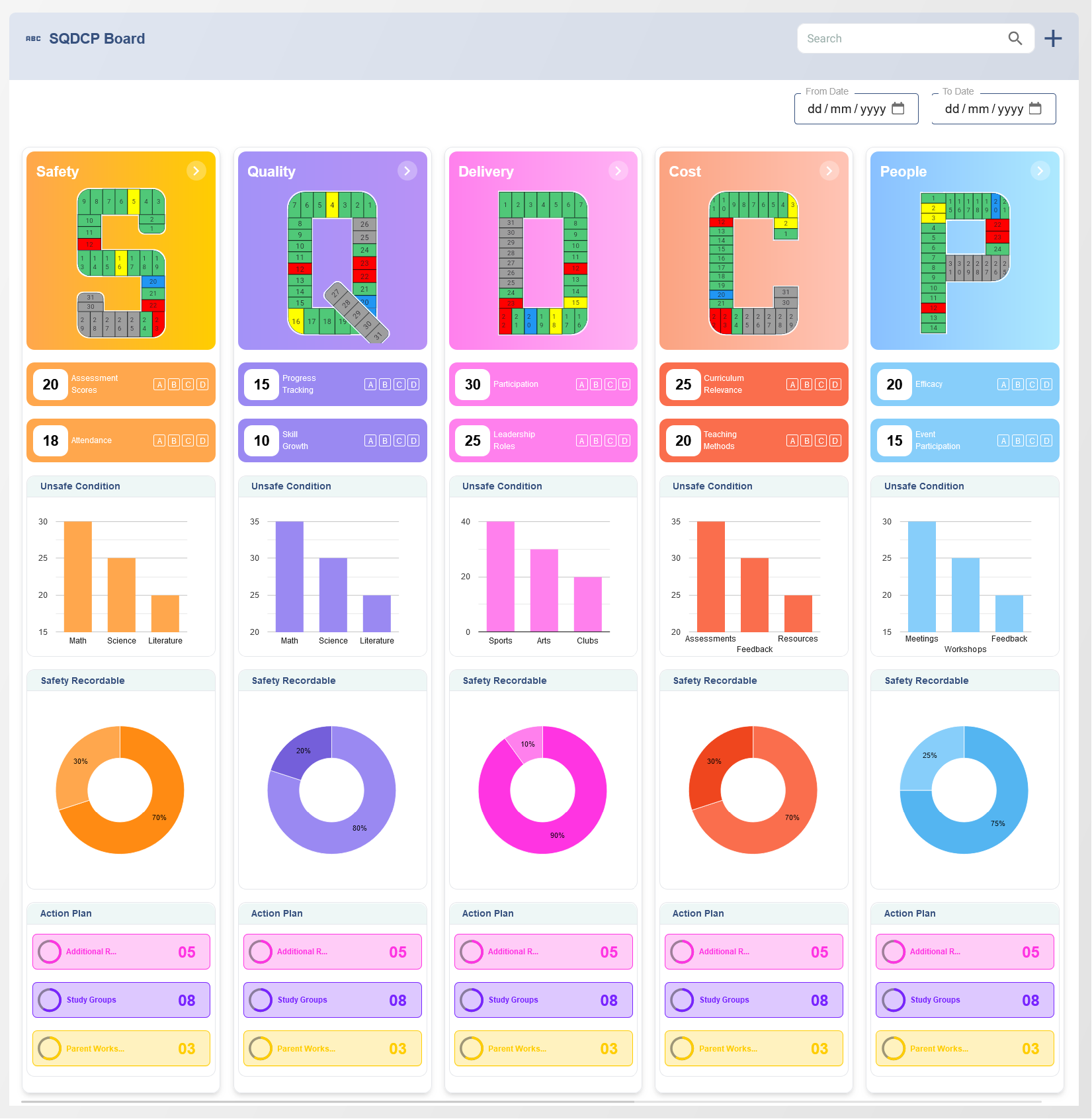Key Performance Indicators (KPIs) are essential metrics that track the performance and success of strategic objectives within a balanced scorecard framework. The balanced scorecard (BSC) is a strategic management tool that enables organizations to translate their vision and strategy into actionable objectives, monitored across four key perspectives: financial, customer, internal processes, and learning and growth. KPIs play a crucial role in measuring progress and ensuring alignment with organizational goals.

Understanding KPIs
KPIs are quantifiable measures that indicate how effectively an organization is achieving specific objectives. They are tailored to reflect the unique priorities of a business and serve as benchmarks for evaluating performance. KPIs are not just numbers but represent strategic focus areas that drive decision-making.
Role of KPIs in the Balanced scorecard
The balanced scorecard links strategic goals to measurable outcomes through KPIs. Each perspective of the balanced scorecard incorporates relevant KPIs to ensure that all aspects of organizational performance are monitored and aligned. This approach fosters a holistic understanding of performance, enabling organizations to balance short-term and long-term objectives effectively.
Examples of KPIs in Each Perspective
1. Financial Perspective
The financial perspective focuses on profitability, cost management, and value creation for shareholders. Examples of KPIs include:
- Revenue growth rate
- Net profit margin
- Return on investment (ROI)
- Operating expense ratio
2. Customer Perspective
The customer perspective emphasizes delivering value and satisfaction to customers. Relevant KPIs include:
- Customer satisfaction score (CSAT)
- Net promoter score (NPS)
- Customer retention rate
- Average response time
3. Internal Processes Perspective
This perspective focuses on optimizing internal operations to improve efficiency and effectiveness. Examples of KPIs are:
- Cycle time
- Defect rate
- Process efficiency ratio
- Innovation rate
4. Learning and Growth Perspective
The learning and growth perspective highlights the importance of employee development, innovation, and organizational culture. KPIs include:
- Employee engagement score
- Training hours per employee
- Skill acquisition rate
- Leadership development index
Designing Effective KPIs
Developing effective KPIs involves aligning them with strategic objectives and ensuring they are specific, measurable, achievable, relevant, and time-bound (SMART). Steps to design impactful KPIs include:
- Clearly define strategic objectives for each balanced scorecard perspective.
- Identify critical success factors (CSFs) that influence goal achievement.
- Select metrics that reflect performance in achieving CSFs.
- Set realistic targets and thresholds for each KPI.
- Regularly review and update KPIs to adapt to changing organizational needs.
Benefits of KPIs in the Balanced scorecard
Integrating KPIs into the balanced scorecard offers several advantages:
- Enhanced strategic alignment: KPIs ensure that all activities are directed toward achieving organizational goals.
- Improved decision-making: Data-driven insights from KPIs support informed decisions.
- Increased accountability: Clearly defined KPIs establish responsibility and ownership for achieving targets.
- Holistic performance view: Monitoring multiple perspectives provides a comprehensive understanding of performance.
Challenges in KPI Implementation
While KPIs are powerful tools, organizations may face challenges in their implementation:
- Poorly defined KPIs can lead to misaligned priorities.
- Overloading with too many KPIs can dilute focus.
- Resistance to measurement and accountability may arise among employees.
- Inaccurate or incomplete data can compromise the reliability of KPIs.
KPI in Balanced scorecard
What is a KPI in the Balanced Scorecard?
A KPI (Key Performance Indicator) is a measurable value that demonstrates how effectively an organization is achieving its objectives in the Balanced Scorecard framework.
Why are KPIs important in the Balanced Scorecard?
KPIs are important because they provide quantifiable evidence of performance, helping to track progress toward strategic goals across different perspectives.
What are the four perspectives in the Balanced Scorecard?
The four perspectives are Financial, Customer, Internal Processes, and Learning and Growth, each of which requires specific KPIs to measure success.
How do KPIs relate to the perspectives of the Balanced Scorecard?
Each perspective in the Balanced Scorecard requires KPIs that reflect the strategic objectives of that area, ensuring alignment with the overall organizational strategy.
What is the difference between a KPI and a metric?
A KPI is a critical metric that directly aligns with strategic objectives and drives decision-making, while a metric can be any measure of performance, not necessarily aligned with strategic goals.
How do you select KPIs for the Balanced Scorecard?
KPIs should be selected based on their ability to reflect organizational goals, be measurable, and provide insights into the effectiveness of strategies in each perspective.
Can KPIs change over time in the Balanced Scorecard?
Yes, KPIs can evolve as the organization’s strategy and goals change, ensuring the Balanced Scorecard remains relevant and aligned with current priorities.
How do KPIs measure success in the Balanced Scorecard?
KPIs measure success by providing quantifiable data that reflect how well objectives are being achieved in each of the Balanced Scorecard’s perspectives.
What are some examples of KPIs in the Balanced Scorecard?
Examples of KPIs include customer satisfaction ratings, revenue growth, process efficiency metrics, and employee development scores.
How do KPIs help track performance in the Balanced Scorecard?
KPIs provide a clear and measurable way to assess performance against set objectives, offering insights that guide decision-making and strategy adjustments.
How do KPIs align with strategic goals in the Balanced Scorecard?
KPIs are designed to measure outcomes that directly support the achievement of strategic goals in each perspective of the Balanced Scorecard.
What is the role of KPIs in decision-making with the Balanced Scorecard?
KPIs provide essential data for decision-making, allowing management to evaluate performance, adjust strategies, and allocate resources effectively.
Can KPIs be qualitative as well as quantitative in the Balanced Scorecard?
Yes, KPIs can be both quantitative (e.g., sales growth) and qualitative (e.g., customer satisfaction), depending on the strategic objectives being measured.
How are KPIs tracked and reported in the Balanced Scorecard?
KPIs are tracked using performance dashboards, reports, or scorecards, which provide real-time data and insights into organizational performance.
How do KPIs in the Balanced Scorecard help with continuous improvement?
KPIs highlight areas of underperformance, allowing organizations to focus on improvement initiatives, monitor their progress, and make data-driven decisions to achieve continuous improvement.